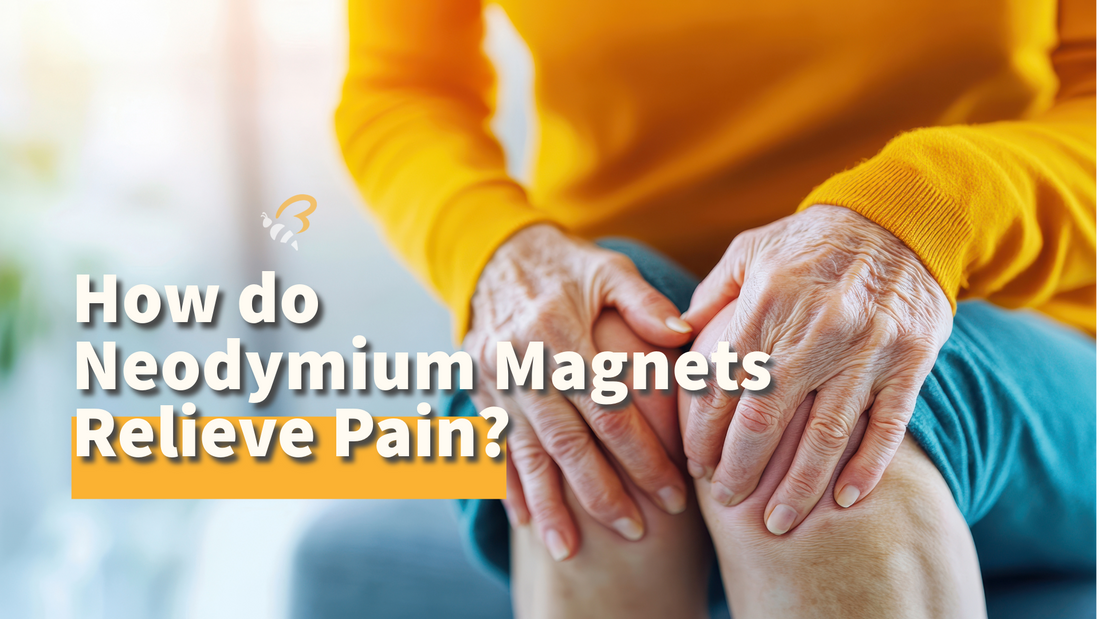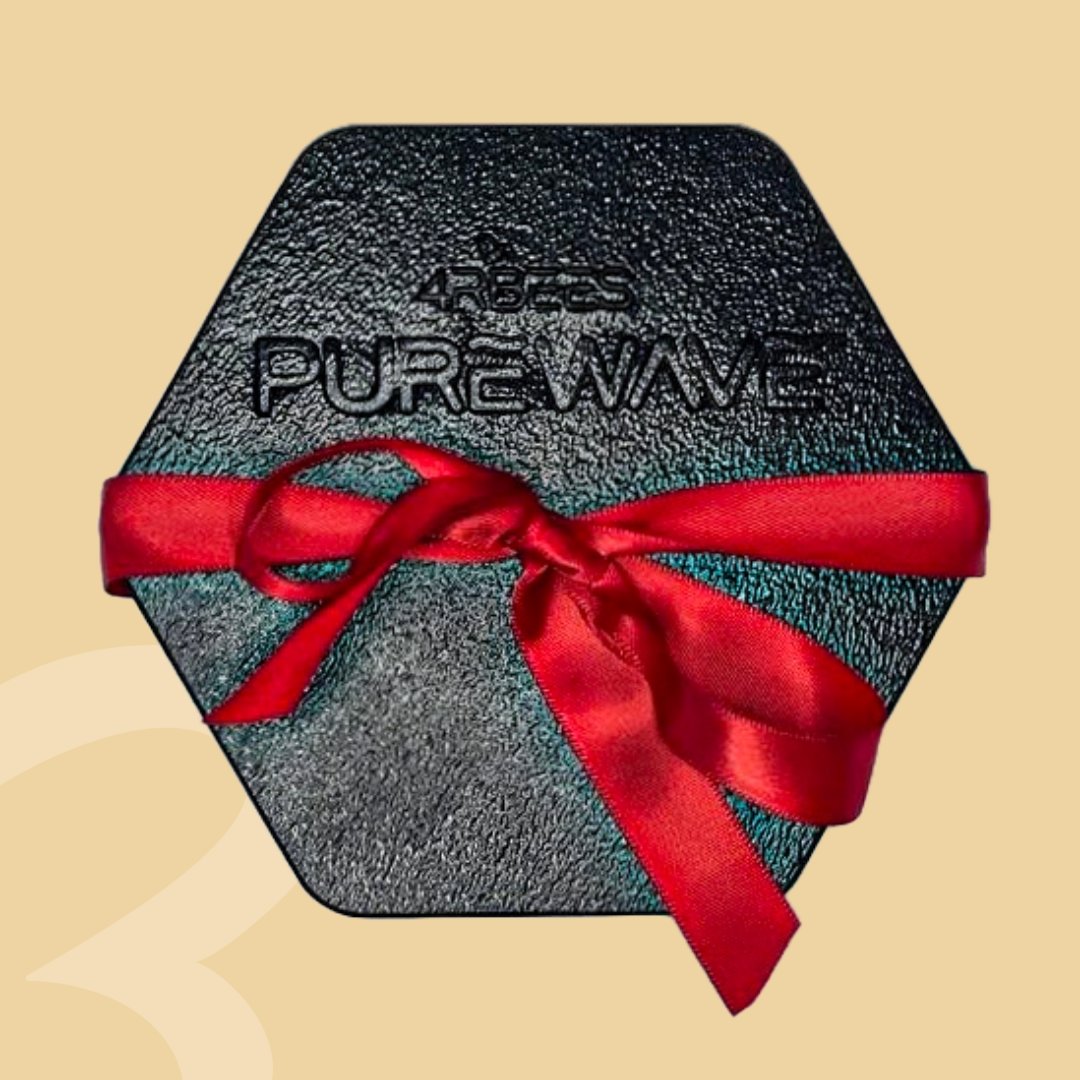
How do Neodymium Magnets Relieve Pain?
Share
First of all, lets understand what exactly neodymium magnets are?
Neodymium magnets have the highest maximum energy in the smallest amount of space of all the rare earth magnets but they are also the most expensive to produce.
They also have a high coercivity which is a resistance to demagnetization making them last for many decades. The properties of neodymium magnets are so much more powerful and efficient compared to other rare earth magnets that they have become the global standard. The discovery of neodymium magnets has allowed for many new technologies to be developed and for many existing technologies to be miniaturized.
At present, they are used in MRIs and as part of magnetic therapy in many diseases such as:
- Arthritis
- Insomnia
- Headaches
- Chronic pain syndrome
- Wound healing
- Expansion of the palate
- Treatment in Orthodontics
Also, the magnet is a stimulant for the differentiation of osteoblasts which are the primary cells which aid the growth of new bones.
How Does Magnetic Therapy Work?
Magnetic therapy research has become increasingly important to the medical field because of the increase in usage in the last few years. In short, the body creates electrical impulses and magnetic fields, and can thus benefit from the magnets increased energy output. According to scientific research, magnetic therapy works to support wellbeing in the body’s systems, including:
Wound healing.
A research study revealed a reduction in blood flow inside tumors exposed to fixed magnetic force fields. However, in tissues with no tumors, magnetic therapy increased the platelet activity. As a result, the increase in platelet activity and microcirculation results in faster wound healing. In fact, a study in 2015 revealed that magnetic therapy results in faster, smoother and better anastomosis and recovery compared with sutures done manually.
The Neural System
A study showed that magnetic fields are compatible with neural research without causing
damage to the neural system or disrupting the parameters of the study.
It creates a strong magnetic force field in rTMS, as an effective therapy for depression.
Also, it is beneficial as this therapy doesn’t need anesthesia, thus avoiding possible side effects.
The Skeletal System
A study using rabbits revealed that neodymium magnets in a scaffold prevented movements in the damaged epiphysis of the femoral bone, enabling the tissue regeneration faster.
The GIT System
Neodymium magnets are valuable in surgeries, including endoscopic surgeries in the colon. It aids in accessing the tumors easily, and in quicker recovery of the patient due to the laparoscopic nature of the surgery.
Dentistry
Due to the size and strong forces of attraction, neodymium magnets keep orthodontic prosthetics in place.
Does Scientific Research Really Support Magnetic Therapy?
Magnetic therapy research mainly focuses on finding an effective painkiller in a medical sense. In 1997, the Baylor medical school showed results to support this claim. However, the research met its end due to scientific objectivity, the small size of the experiment, and the inability to successfully repeat the results.
A Wakeup Call
Despite medical advancements and a health care system that spends trillions each year,
Americans are getting sicker. Poor diet, environmental toxins, sedentary lifestyles and chronic stress are driving metabolic dysfunction and draining cellular energy, creating the perfect conditions for chronic disease.
- Conventional medicine focuses on symptoms, not root causes — Instead of targeting the root causes of this modern health crisis, conventional medicine remains fixated on symptom management. Patients are prescribed medications that mask problems rather than fix them. If this trajectory continues, the public will face even higher risks of disease and fewer options for real recovery.
- The good news is, chronic ill health is unavoidable — Many diseases are largely preventable and, in many cases, reversible. Your body is not failing — it is responding to an environment that disrupts its ability to function optimally at the cellular level.
- True healing requires a shift in focus — Until modern medicine recognizes that cellular dysfunction is the missing link in chronic disease, no amount of pharmaceuticals or short-term interventions will restore true health. The future of medicine must move beyond symptom control and focus on where health truly begins — at the cellular level.
When magnets are placed on the skin, there are few proposed ways in which the magnets may be functioning. Some of the proposed theories about their ways of working include:
- They help to relax the small blood vessels in the area and augment the blood flow around
the painful area. - They help to improve the oxygen carrying capacity; thus revitalizing the muscles and tissues of the body.
- They help to relax tensed muscle or prevent muscle spasm, which is mostly the primary
cause in most cases of musculoskeletal pain. - Another possible way in which they might be helpful is by interfering with the pain
transmitting pathways that send message to the brain, thus reducing the feeling of pain.
Neodymium Magnetics Generally Used For Painful Conditions That Include:
- Headache- Magnetic headbands are tied around the head
- Neck and Shoulder Pain- Magnetic shoulder wraps and neck collars are used.
- Back Pain- Magnetic back braces, back pads or belts are available to help with back pain.
- Leg Pain- Magnetic knee braces and ankle support can be used according to the pain.
- Painful Heels- Magnetic insoles are used to relieve aching heels after long standing hours of
work. - Tennis Elbow- Magnetic tennis elbow support or bands can be used
Arthritis- Magnetic belts, pads and braces can be used based on the painful region.
For generalized painful musculoskeletal conditions, body soreness or fibromyalgia, magnetic pillows, mattresses and chairs can also be used for healing and improving sleep.
Presently, more research is being conducted on the use of magnet therapy and can be considered only as a complementary modality. The use of magnet therapy for pain should not replace traditional medical management; appropriate diagnosis and conventional treatment has its own importance. Any health concerns should receive medical attention as appropriate following which you can work on complementary methods. Make sure your physician is aware of the complementary treatment modalities that you are using or willing to use. This will help in drawing a safe and effective treatment plan. Magnets are generally safe when applied on the skin. However, the use of magnets may not be recommended for all; especially in patients who have implants or devices like pacemakers, etc as magnets can interfere with such devices so obtain a professional medical opinion first.
Experts with experience in magnet therapy can guide with the use of magnets for pain
management. Sometimes, experts also recommend placing magnets on certain specific trigger points like those in acupressure; the time period and duration should be followed as advised. In case appropriate results are not obtained, it is advisable to seek medical advice.
Neodymium magnets are powerful enough, even when in small amounts. Moreover, the element is part of the periodic table elements and is truly rare to come across. Nevertheless, it is increasingly practical in surgeries and therapy, with countless indications of a promising future.
Read the full research here on the use of neodymium magnets in healthcare and their effects on health.
Order your PureWave Cell and receive a FREE PureWave Body Pack Today!



